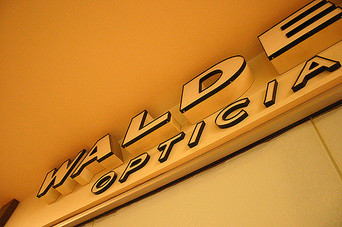The front walls of the shop were lined with tidy shelves of glasses. There were leather chairs and low tables with magazines to read while you waited, that is, if you had to wait, because there always seemed to be someone at the ready to help you.
Waldert’s was a long, narrow space with pale yellow wood paneling; the carpet had just enough design to help line up each optician’s table top left leg on the border of the rug. It was the uniformity of the place that made me feel so secure.
The tables were lined up in row on each side of the thin room – there was maybe only two tables’ width as a corridor down the center.
Each desk had swinging parts to adjust to the optician’s needs. There were the cubbies under the glass top that held high-end glasses, and drawers for clients’ glasses. On a small swinging platform, there was a magical machine that heated up the arms of the glasses so they could be adjusted. A box of tissues on the table and a refill in the upper right drawer were mandatory. A mirror hung from a hook on each table. So clever! Hanging the mirror on a hook to save table-top space! This appealed to me a great deal as a child, and I am still a sucker for clever storage ideas.
Into this organized, categorized, and immaculate world I walked, my eyes blurring the neatness together into a gentle haze. I got to sit across from the optician and feel warm plastic slide over my ears. My eyelids lowered so that I did not have to look into his face, I missed the early miracle, and answered, while still looking down, “Yes, yes, they feel fine.” But I felt ashamed that I needed glasses.
I walked out of the shop with my mother, head down, stepping around the rug’s pattern. I opened the door for my mother and followed her outside. After taking two steps, I stopped.
“Oh!”
“What’s wrong?”
“Wrong? There are LEAVES on the trees! I mean, I can see EACH leaf! This is really gonna be good, this seeing things!”


 RSS Feed
RSS Feed